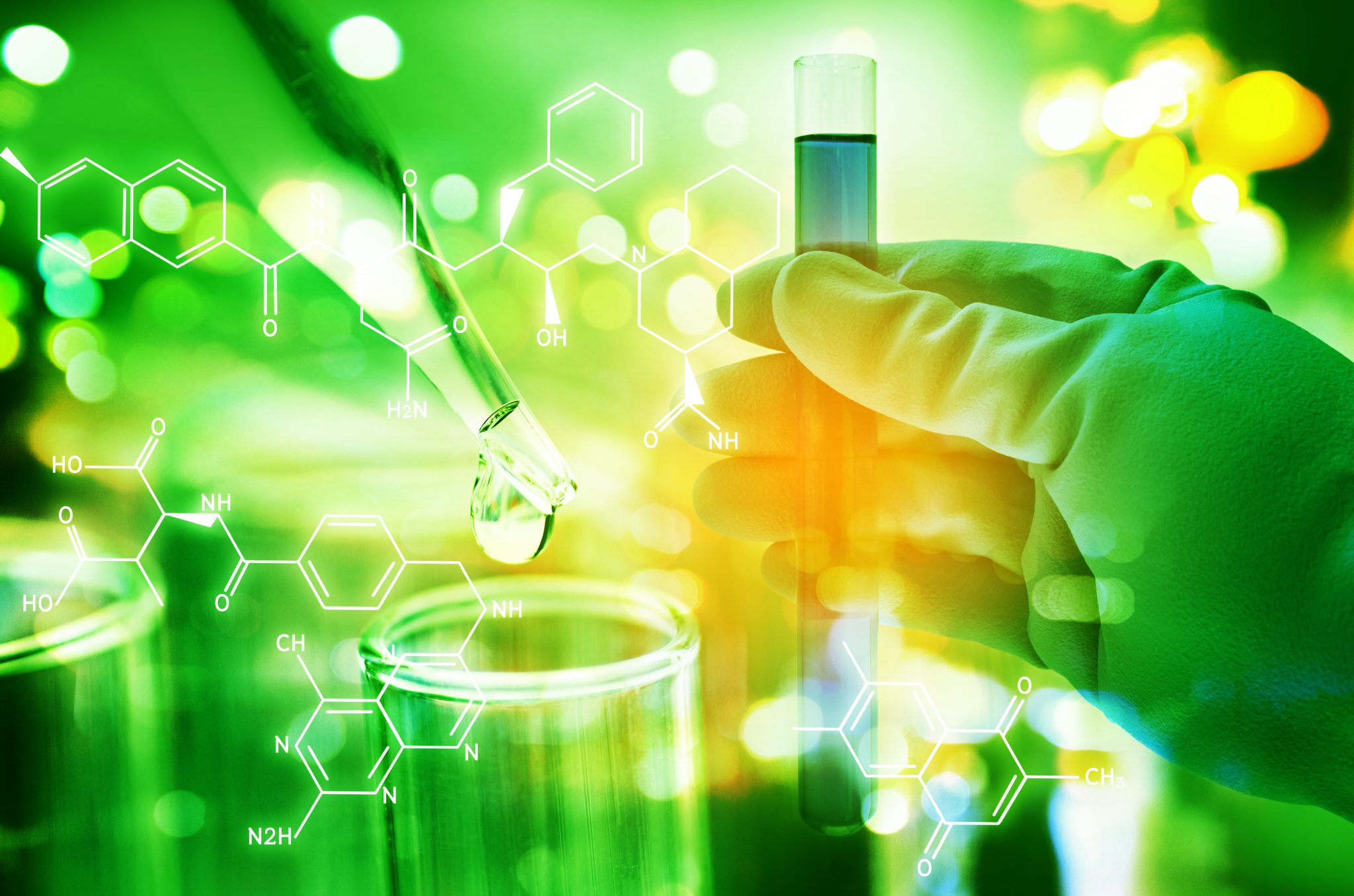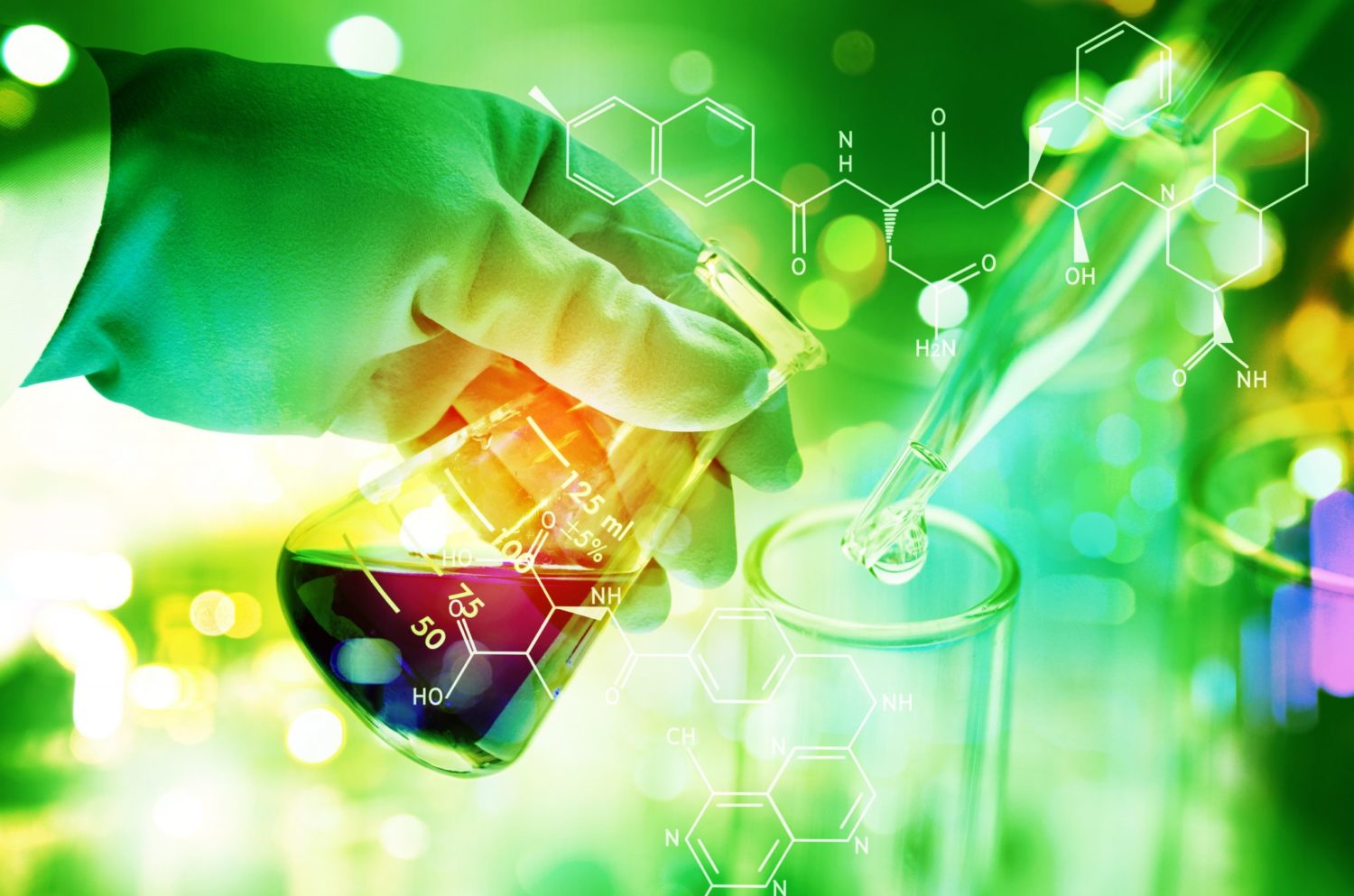'He who reaches for the stars never stops with a handful of mud,' says a saying. In other words: if you have big ambitions, then at least you have a chance of making an impact. The chemical industry in the Northern Netherlands has big ambitions: we want to be frontrunners in greening the chemical industry. In the Netherlands? Nâh, too modest. Leading the world, that's what we want.
Greening the chemical industry. How are companies tackling it?
THE FOUR ELEMENTS
Chemistry works with elements. Oxygen and nitrogen in air, sodium and chlorine in salt, carbon and hydrogen in natural gas -as we speak 118 elements are known. We can also decompose the greening of chemistry into elements, they are the ingredients of success: green energy, biobased raw materials, smart processes and finally chain formation and reuse (what is waste for one, is raw material for another). The Northern Netherlands has all four of these elements, allowing us to build an unparalleled ecosystem. On to the world top.
Green energy
The entire chemical industry in Delfzijl could run on energy from biomass. But there is much more: close to the cluster is Gemini, one of the largest wind farms in the world. Add to that the fact that we are also investing in wind and solar energy, and the picture turns deep green.
Biobased raw materials
We have had a strong agricultural sector in the North for centuries. But suddenly we see new uses for old crops, such as sugar beets and potatoes, grass and top wood from the forests: they are raw materials from which the chemical industry can make "intermediate chemicals" (say, building blocks for sustainable plastics).
Smart processes
'Greening is also: doing more with less,' states Errit Bekkering of the NOM. 'Fewer raw materials, less energy, less burden on the environment.' Fortunately, the North is also strong in digital technology and big data, because this allows us to analyze processes in chemistry and then optimize them: make them more efficient and cleaner.
Chain formation and reuse
Many chemical plants close together have the advantage that there is less and less waste: what is a residual stream for one is a valuable raw material for another. Therefore, chain formation and reuse are necessary for greening. Ultimate goal: closed chains, a circular economy, in which not only material but also energy flows are exchanged. We are on our way.
THE FOUR SUCCESS FACTORS
Why are companies in the North shooting so well with greening? It's the people, it's the mentality. We realize that we have to work together, we have the guts to cherish a great ambition, and we are of "don't bullshit but clean up.
Put your heads together
The broader an ambition is shared, the more likely it is to succeed. In the Northern Netherlands we have understood this very well: governments and educational institutions also have greening in mind and strengthen the business community in the so-called "triple helix.
Think big
One or two companies? No, none of that stuffy stuff. Let's green the whole chemical industry! By now, the lion's share of chemical companies are doing it. Thinking big is a prerequisite for making an impact. And there is nowhere better than here: we have the raw materials, the energy, the talent and the infrastructure.
The hands off
Not words, but deeds. Doing things, otherwise greening will remain in a drawer at reports. The chemical industry is already working on replacing natural gas with wind and biomass as energy sources. Hydrogen from electrolysis and biomass are also green raw materials: hydrogen and carbon dioxide can be made into methanol, a basis for semi-finished chemical products; from biomass we extract sugars to make sustainable plastics.
Do it together
Opportunities to save don't stop at the fence around a business site. Greening requires a joint effort with "the neighbors. In the North, companies cooperate, the cluster around Delfzijl makes chemical building blocks for the cluster around Emmen where polymers and materials are made, and entrepreneurs, governments and knowledge institutions find each other: they work together in Chemport Europe (see box on next page).

POINT ON THE HORIZON
There is a breaking point in chemistry, a transition. The challenge is so great that no one can predict what the industry will look like in say twenty years. 'Countless scenarios for greening are conceivable, a mix of sustainable energy, green raw materials and new technologies is needed,' says Errit Bekkering of the NOM. 'There is no blueprint, there is no Grand Director. But we did set a point on the horizon to work towards together.'
GREENING IS ALSO: DOING MORE WITH LESS. PERFORM BETTER WITH LESS ENERGY, FEWER RESOURCES AND LESS DAMAGE TO THE ENVIRONMENT
(Errit Bekkering, Business developer NOM)
CHEMPORT EUROPE FROM CHAINS TO CIRCULAR
Entrepreneurs, governments and knowledge institutions are working together in Chemport Europe. The motto is "Changing The Nature Of Chemistry. Because things must be different, they must and can be greener and more sustainable. There are several paths leading to greening. Raw materials play an important role. The Northern Netherlands has been strong in agriculture for centuries and in chemistry for decades. The two worlds are now rapidly converging, as crops such as sugar beets, potatoes, but also grass and wood are increasingly being used to make sustainable chemicals
to make.
Chain formation is another highway to greening. Companies within Chemport Europe can join chains and exchange raw materials with each other. In the near future, the chains will close and a circular economy will emerge within the ecosystem. That ecosystem will become even stronger from the cohesion between the clusters in Delfzijl and Emmen. Delfzijl mainly produces "intermediate chemicals," sustainable building blocks for the companies around Emmen, which focus on the manufacture of fibers and plastics. In this way, the Northern Netherlands is building a cluster that matters. Not just on a national scale, but worldwide.
Could it be any better? Yes, of course. It is never finished. In the area of collection and recycling, there is still a world to be won. In this area, companies like Attero and Omrin but also Morssinkhof, Cumapol and others are making great strides: thanks to them, products like PET bottles are starting a new life as a raw material for plastics. Not just once, but over and over again.
'THIS IS HOW WE MAKE A DIFFERENCE IN THE WORLD'
Entrepreneurs, governments and knowledge institutions are working together in Chemport Europe. The motto is Changing The Nature Of Chemistry. Because it has to be different, it has to be greener. Errit Bekkering, busy with Green Chemistry at the NOM, has been involved from the beginning. 'Chemport Europe emerged from thinking about our proposition, /our story. This is how we found out that in the Northern Netherlands we could link a number of elements together to form a unique combination: we have two clusters, Delfzijl and Emmen, which also cooperate with each other, we have renewable energy and green raw materials, we have a high-quality knowledge cluster, ports, railroads and roads. Combined with a common focus, these elements form a unique ecosystem, with that we set something in the world.'
AVANTIUM: GREEN ON ALL FRONTS
How does the greening of chemistry work? What does the coherence in Chemport Europe's ecosystem look like? Avantium's biorefinery is a textbook example.
Avantium is green on several fronts: It all starts with wood, preferably from Dutch forests. From the wood, Avantium extracts two products through biorefinery: lignin and glucose, a type of sugar. The former is a sustainable fuel for energy producer RWE, the latter a raw material for a wide range of monomers, building blocks for sustainable polyesters.
Various production chains within Chemport Europe can use these monomers as raw materials. At Cumapol (the name stands for Custom Made Polyesters) in Emmen, for example, products from Avantium can be used as the basis for PET, a plastic from which sustainable bottles for water and soft drinks are made. Circular production is within reach: the PET bottles are returned via collection by Attero, Omrin and Morssinkhof and begin a new life as raw materials.
